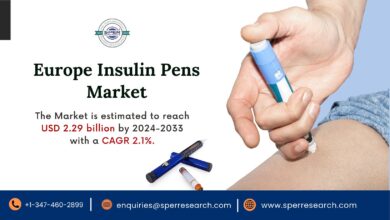The Advantage of Knowing: Do Veins Grow Back After Being Cut?
Understanding how the human body repairs itself can be fascinating, especially when it comes to the circulatory system. A common question people ask is: “Do veins grow back after being cut?” This query stems from concerns about injuries, surgeries, and the overall resilience of our vascular system. Let’s dive into the intricacies of how veins respond to injury and the processes that enable them to regenerate.
Understanding Veins and Their Function
Before delving into the regeneration process, it’s crucial to understand the role and structure of veins. Veins are blood vessels that return deoxygenated blood from various parts of the body back to the heart. They are an essential component of the circulatory system, working alongside arteries, which carry oxygenated blood away from the heart to the body’s tissues.
Veins have thinner walls compared to arteries and contain valves that prevent the backflow of blood, ensuring it moves in the right direction toward the heart. This structure is vital for maintaining proper circulation and ensuring that blood efficiently returns to the heart for re-oxygenation.
The Healing Process: Immediate Response to Injury
When veins are cut or injured, the body initiates an immediate response to control bleeding and begin the healing process. This response involves several stages:
- Hemostasis: This is the first phase, where blood vessels constrict to reduce blood flow to the injured area. Platelets rush to the site, forming a clot to stop further bleeding.
- Inflammation: In this phase, the body sends white blood cells to the injured area to fend off infection. This process also involves the release of growth factors that initiate tissue repair.
- Proliferation: During this stage, new tissue forms. Cells called fibroblasts produce collagen, a protein that helps form the new tissue matrix. Additionally, endothelial cells begin to regenerate the inner lining of the vein.
- Remodeling: This is the final stage, where the new tissue matures and strengthens. The body continues to remodel the tissue to restore normal function and appearance as closely as possible.
Vein Regeneration: How It Happens
The body has a remarkable ability to heal and regenerate, and veins are no exception. However, the extent and efficiency of vein regeneration depend on several factors, including the size of the vein, the extent of the injury, and the individual’s overall health.
Small Veins vs. Large Veins
Small veins, such as those in the skin or superficial tissues, often regenerate more quickly and efficiently. The endothelial cells that line the veins can rapidly multiply and migrate to cover the damaged area, promoting healing. These small veins have a robust network of capillaries and smaller venous branches that support the regeneration process.
In contrast, larger veins, like the major veins in the legs (e.g., the saphenous vein), may require more extensive healing. If a large vein is cut, the body might not be able to completely regenerate it. Instead, it may form a scar tissue or fibrous tissue at the injury site. However, the body can compensate by rerouting blood through nearby veins, ensuring that circulation is maintained.
Surgical Interventions and Vein Grafting
In some cases, especially during surgeries where veins are intentionally cut or removed, surgeons may use vein grafting techniques to restore blood flow. Vein grafting involves transplanting a vein from another part of the body to replace or bypass the damaged vein. This procedure is common in coronary artery bypass surgery, where veins from the leg (usually the saphenous vein) are used to bypass blocked arteries in the heart.
The success of vein grafting depends on the compatibility of the graft and the surgical technique. Over time, the grafted vein can adapt to its new location, and the body helps integrate it into the existing circulatory system.
Factors Affecting Vein Regeneration
Several factors can influence how well and how quickly veins regenerate after being cut. Understanding these factors can help manage expectations and guide post-injury or post-surgical care.
Age and Overall Health
Younger individuals generally have a more robust regenerative capacity compared to older adults. Age affects the efficiency of cell proliferation and tissue repair. Additionally, overall health plays a significant role. Conditions such as diabetes, vascular diseases, or immune system disorders can impair the body’s ability to heal and regenerate veins.
Nutrition and Lifestyle
Proper nutrition is essential for tissue repair and regeneration. Nutrients such as vitamins C and E, zinc, and proteins support collagen production and cell repair. Maintaining a healthy lifestyle, including regular exercise and avoiding smoking, can also enhance the body’s healing processes.
Severity of the Injury
The extent of the vein injury significantly impacts the regeneration process. Minor cuts or superficial injuries to veins usually heal faster and more completely. In contrast, severe injuries that involve extensive damage to the vein and surrounding tissues may require longer healing times and might not result in complete regeneration.
The Role of Medical Advances in Vein Repair
Medical science has made significant strides in understanding and supporting vein regeneration. Advances in surgical techniques, medical devices, and regenerative medicine offer promising solutions for vein repair and regeneration.
Endovascular Procedures
Endovascular procedures, such as angioplasty and stenting, are minimally invasive techniques used to treat damaged or blocked veins. These procedures involve inserting a catheter into the vein and using balloons or stents to open up the vessel, promoting better blood flow and aiding in the healing process.
Tissue Engineering and Stem Cell Therapy
Tissue engineering and stem cell therapy are emerging fields that hold great promise for vascular regeneration. Researchers are exploring ways to use stem cells to promote the growth of new blood vessels and repair damaged veins. These therapies could potentially enhance the body’s natural healing processes and improve outcomes for individuals with severe vein injuries.
Post-Injury and Post-Surgical Care
Proper care after vein injury or surgery is crucial for optimal healing and regeneration. Following medical advice and taking appropriate measures can significantly improve the healing process.
Wound Care and Hygiene
Keeping the wound clean and protected is essential to prevent infection and promote healing. Follow your healthcare provider’s instructions for wound care, including cleaning, dressing changes, and monitoring for signs of infection.
Physical Activity and Rehabilitation
Engaging in appropriate physical activity can support circulation and aid in the healing process. Your healthcare provider may recommend specific exercises or physical therapy to promote blood flow and prevent complications such as blood clots.
Monitoring and Follow-Up
Regular follow-up appointments with your healthcare provider are important to monitor the healing process and address any concerns. If you experience unusual symptoms or complications, seek medical attention promptly.
Conclusion: The Resilience of Veins
So, do veins grow back after being cut? The answer is complex and depends on various factors. While veins have a remarkable ability to heal and regenerate, the extent of regeneration can vary based on the size of the vein, the severity of the injury, and the individual’s overall health. Advances in medical science continue to enhance our understanding and ability to support vein repair, offering hope for better outcomes in the future.
Understanding the body’s healing processes and taking proactive steps to support recovery can make a significant difference. By prioritizing overall health, following medical advice, and staying informed about new medical advances, individuals can optimize their vein health and resilience. The human body’s capacity for repair is truly extraordinary, and with the right care and support, veins can indeed recover and continue to perform their vital functions.



